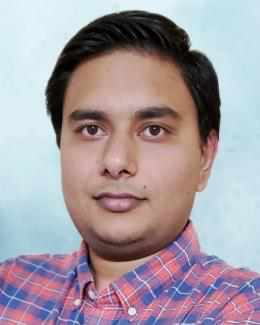Seminars
Dr. Vimal Ramanuj
Computational Sciences and Engineering Division
Oak Ridge National Laboratory
Pore Resolved Simulations of Chemical Vapor Infiltration for Manufacturing Ceramic Composites

ABSTRACT: Chemical vapor infiltration (CVI) is a key technology to manufacture silicon carbide reinforced ceramic matrix composites which offer high temperature capability compared to metallic superalloys. In CVI, hot reactive gases are infiltrated into a porous preform which, through heterogeneous kinetics, deposit solid ceramic phase on the pore scale surface area and densify the preform. The competing effect of reagent transport and chemical kinetics poses a key challenge which is to achieve uniform densification while keeping the processing times and residual voids low. We present a pore resolved direct numerical simulations approach to capture and quantify the densification characteristics during CVI processing of porous preforms. Evolution of the deposition front is represented using a level set method. Densification behavior is characterized in terms of the Thiele modulus which represents the ratio of diffusion to kinetics time scales. The model is applied to simulate densification of packed particles and fibrous preforms with the emphasis on quantifying the effective medium properties as functions of porosity evolution. We also present a novel CVI processing technique that uses resonant microwaves to volumetrically heat the preform and create temperature inversion. Its distinguishing characteristics to overcome challenges of conventional CVI are discussed. These studies were performed on the Oak Ridge Leadership Computing Facility (OLCF) Summit supercomputer using the Quilt code developed at Oak Ridge National Laboratory (ORNL). Quilt is a graphics processing unit capable level set solver for modeling reactive transport phenomena in multiphase and porous media applications. Key capabilities and applications of the code will be outlined briefly.
BIOGRAPHY: Vimal Ramanuj is a research staff in the Multiscale Materials group within the Computational Sciences and Engineering Division at ORNL. His research interests include high fidelity modeling of interfacial physics and its application to multiphase problems. He is one of the developers of the Quilt high-performance computing code used for materials and manufacturing applications. He earned his PhD in Mechanical Engineering from the University of Texas at Arlington where he worked on developing a level-set and volume-of-fluid based solver for simulating droplet impact and deposition for metal/alloy printing.